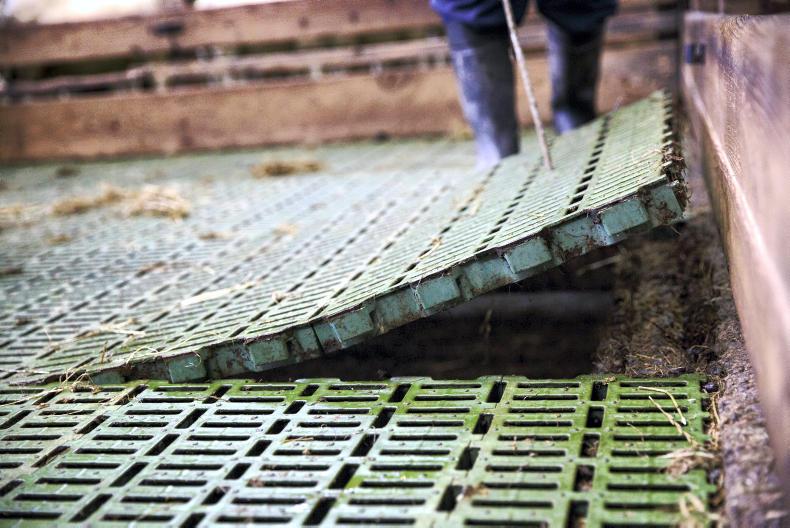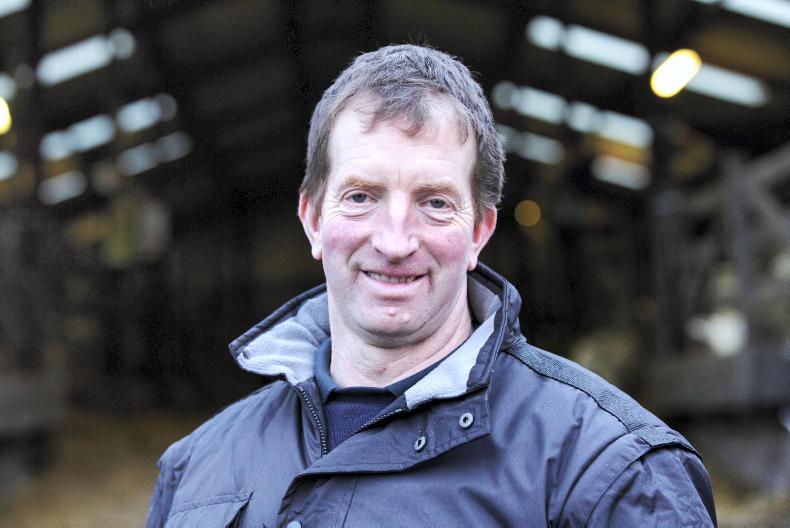Brendan O’Sullivan from Upper Liss, Cahersiveen, Co Kerry, has a mid-season lambing flock comprising 320 ewes. In 1986, an eight-bay sheep shed was built on the farm to accommodate the ewes over the winter.
The shed allowed for an increase in the stocking rate and it also took the pressure off grazing ground over the winter. This meant that there was more grass available to freshly lambed ewes in the spring. Originally, the penning areas in the shed were floored with timber slats but, with over 20 years of service, the slats eventually wore and began to break.
After spending a few hours carrying out repairs on the timber slats on Christmas Eve, Brendan decided that they needed to be replaced. He decided not to go with timber ones again because they have a shorter lifespan and he felt timber can hold bacteria easier than other materials. The other option was concrete slats but Brendan felt it could be too hard on sheep’s hooves and cold for newborn lambs. He had no experience of expanded metal slats and wasn’t sure where he could source them.
Brendan said that because he is located in the southwest, away from tillage areas, straw-bedding would be too expensive and a labour-intensive option for him. The only other option for him was plastic slats.
The shed is 126ft long and 45ft wide. The central passage is 13ft wide, which is a little narrower than other modern-day sheds where the passages are 15ft to 20ft wide in many cases. The width works fine for Brendan because he doesn’t use large silage wagons for feeding.
The pens are 16ft wide and the length varies in each pen because there are walk-through troughs in some. There is a combination of older timber and newer steel penning. Brendan is in the process of upgrading to steel penning because the timber penning has got old and needs replacing. In total, the shed can hold all 320 ewes comfortably.
He finds it much easier to manage all the ewes at lambing time when they are under one roof. He built two stands that are supported on stanchions in the central passage which hold any equipment needed for lambing such as tags, castration rings, sprays, gloves, etc. This means everything is to hand when needed and cuts out wasting time looking for something when it is required.

Ewes are housed at the end of November until March. Brendan says that sheep are very clean and content on the plastic slats, which were sourced from O’Donovan Engineering. Each pen can hold 20 ewes but more would fit if they were winter-shorn.

There is one walk-through trough between every two pens. This means that when feeding meal Brendan has to make sure ewes in the two pens sharing a walk-through trough have similar dietary requirements.
After scanning he separates the sheep into groups of triplet-bearing ewes, twin-bearing ewes and singles, and feeds accordingly.
Sometimes, if there are not enough triplets to make up a total of 40 ewes sharing a walk-through trough, he will take under-condition, twin-bearing ewes and mix them with the triplets. This helps to maximise shed utilisation and thin twin-bearing ewes will also benefit from being fed extra concentrates.
There are a series of timber feeders at the front of each pen. Brendan says he included feeders because he feels they are more hygienic than feeding on the concrete and ewes cannot push their feed away easily.
He only feeds chopped, baled silage. He uses the tractor’s front loader to carry in bales and a hydraulic bale splitter to make it easier to break up a bale for manual forking.
Brendan says that people comment that his twice-a-day feeding method is very labour-intensive but he feels it is worth it.
“I pike in silage to the feeders twice a day. By doing this, I can exclude any bad silage and this has really helped to prevent my ewes from getting listeriosis,” he explains. Interestingly, in the walk-through troughs, he added plastic boarding to protect the timber from corrosion. This plastic stock boarding is the same as the panelling on new handling units. The walk-through troughs are 23in wide and they sit on top of the plastic slats.
Brendan made sure that the legs had a big footprint to spread the weight across the slats rather than a single point.
Every couple of days, Brendan cleans any silage off the slats with a garden rake to prevent slots clogging up with the baled silage. Precision chopped silage from a pit would not be as much of an issue in this regard but a pit does not suit Brendan’s system. The water troughs are set high on the wall so that ewes cannot dirty them. Brendan has set up steps however, so they can drink comfortably.

There is a 2ft clearance between the slats and the concrete floor below for manure to build.
Brendan says that this is an adequate manure storage space for a 3.5-month annual housing period. The plastic slats measuring 800mm x 400mm all slot together and sit on top of steel runners.
The runners are supported by two concrete stub walls, which run the length of the shed and timber railway sleepers on blocks in the centre of the penning area.
Every year the plastic slats, runners and sleepers are taken up by hand and the manure is removed with the tractor bucket and tipped into an outdoor slurry tank. Water is added to the manure in the outdoor tank and the mixture is then agitated and spread on the land with a slurry tanker. Brendan says he could spread the manure with a muck spreader also.

Every winter sheep factories issue warnings regarding dirty lambs and hoggets being presented for sale. In many cases, farmers are feeding sheep around troughs and with wet weather muck buildup is inevitable. In this situation, lambs’ fleeces can become filthy. The advice is to alternate troughs regularly or feed indoors. Brendan came up with a good idea to overcome this issue. He set up an area of plastic slats sitting on runners measuring 2.4m x 3.4m and parked his creep feeder on top. He also placed a number of timber boards around the plastic slats to increase the floor area. Now there is far less muck around and hoggets are much cleaner.

Brendan will move the slats and feeder when the ground gets messy in the area around the timber boards. Setting up this feeding area cost Brendan approximately €450 for the slats. He thinks that with some modifications the system could be set up on a sleigh/wheels so a tractor could move it easily to another location.
Cost
 Brendan O’Sullivan (pictured) said that slatting the shed was a big investment but he is happy he went to the expense. Plastic slats are covered in the farm buildings grant scheme, TAMS II, and may be an option for farmers with existing straw-bedded sheds. According to O’Donovan Engineering, plastic slats cost approximately €46/m2 excluding VAT (farmers get VAT back for slats). At that approximate price, it would cost Brendan €17,222 excluding VAT to buy slats and runners for the 374.4m2 penning area.
Brendan O’Sullivan (pictured) said that slatting the shed was a big investment but he is happy he went to the expense. Plastic slats are covered in the farm buildings grant scheme, TAMS II, and may be an option for farmers with existing straw-bedded sheds. According to O’Donovan Engineering, plastic slats cost approximately €46/m2 excluding VAT (farmers get VAT back for slats). At that approximate price, it would cost Brendan €17,222 excluding VAT to buy slats and runners for the 374.4m2 penning area.